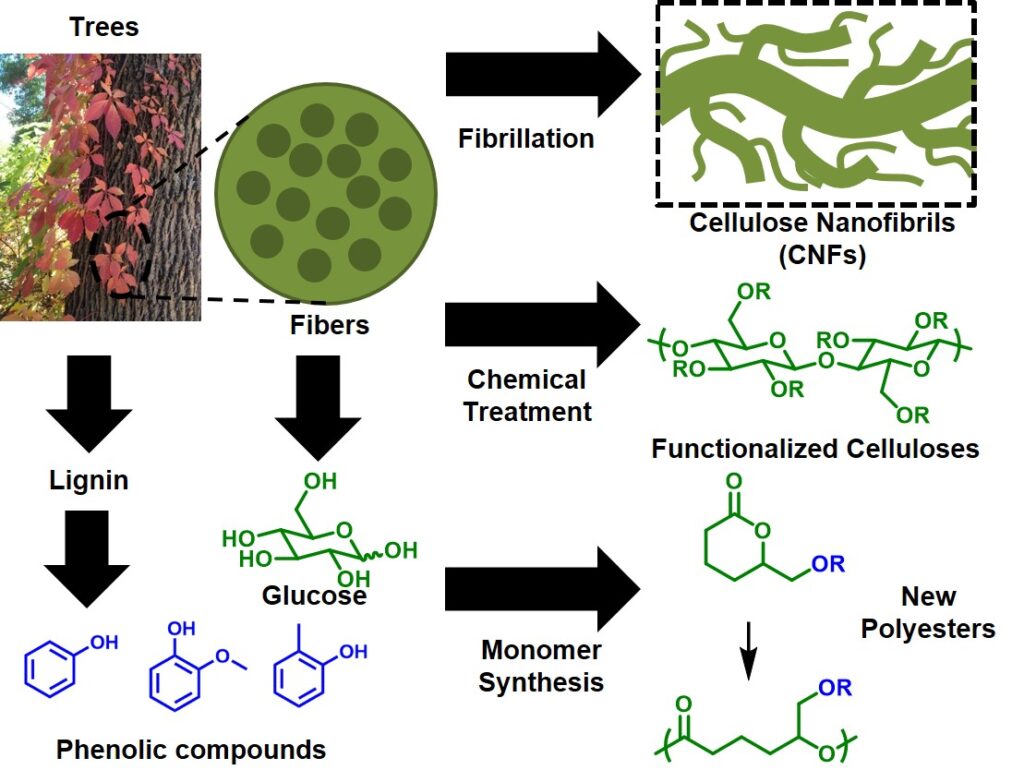Sustainable Materials
The majority of commercial plastics and rubbers are derived from petroleum sources and are tied to the availability of this non-renewable resource. Furthermore, most petroleum based polymers will not degrade in nature which has led to environmental challenges such as plastic pollution in the ocean.
We develop new sustainable polymers from biological derivatives through the modification of natural polymers and the creation of new monomers to address these challenges.
We currently are researching:
Chemical modifications to cellulose nanomaterials to control their nanoscale interactions in composites.
Modifications to natural polysaccharides to increase their reactivity and create new materials.
Utilizing lignin and wood sugars to create new polyesters with tunable physical and chemical properties.
Selected Publications
Fein, K.; Bousfield, D.; Gramlich, W. M. “The influence of versatile thiol-norbornene modifications to cellulose nanofibers on rheology and film properties.” Carbohydrate Polymers 2020, 230, 115672.
Salari, M.; Bitounis, D.; Bhattacharya, K.; Pyrgiotakis, G.; Zhang, Z.; Purington, E.; Gramlich, W. M.; Grondin, Y.; Rogers, R.; Bousfield, D.; Demokritou, P. “Development & characterization of fluorescently tagged nanocellulose for nanotoxicological studies.” Environmental Science: Nano 2019, 6, 1516 – 1526.
McOscar, T. V. C.; Gramlich, W. M. “Hydrogels from Norbornene-Functionalized Carboxymethyl Cellulose Using a UV-Initiated Thiol-Ene Click Reaction.” Cellulose 2018, 25, 6531 – 6545.
Hossen, M. R.; Dadoo, N.; Holomakoff, D. G.; Co, A.; Gramlich, W. M.; Mason, M. D. “Wet Stable and Mechanically Robust Cellulose Nanofibrils (CNF) Based Hydrogel.” Polymer 2018, 151, 231 – 241.
Vithanage, A. E.; Chowdhury, E.; Alejo, L. D.; Pomeroy, P. C.; DeSisto, W. J.; Frederick, B. G.; Gramlich, W. M. “Renewably sourced phenolic resins from lignin bio-oil.” Journal of Applied Polymer Science 2017, 134, 44827.
Gramlich, W.M. “Toughening polylactide with phase-separating complex copolymer architectures.” Macromolecular Chemistry and Physics 2015, 216, 145–155.

